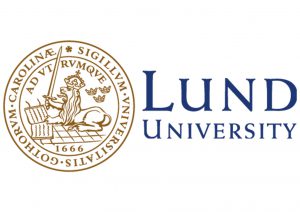 POLIMI is the largest Technical University in Italy and the Dipartimento di Elettronica, Informazione e Bioingegneria (DEIB) is the largest Department of POLIMI with 250 faculties. Within the DEIB, the Biosignals-Bioimaging-Bioinformatics (BBB) Group will participate to this network. The Group has long standing expertise in the processing of vital signals feature extraction, system modeling as well as in the implementation of these methodologies in wearable or portable devices. It has been the pioneer in the application of the parametric spectral estimators to HRV analysis and it is a leading group in the development of time-frequency methods for biological signals characterization.
POLIMI is the largest Technical University in Italy and the Dipartimento di Elettronica, Informazione e Bioingegneria (DEIB) is the largest Department of POLIMI with 250 faculties. Within the DEIB, the Biosignals-Bioimaging-Bioinformatics (BBB) Group will participate to this network. The Group has long standing expertise in the processing of vital signals feature extraction, system modeling as well as in the implementation of these methodologies in wearable or portable devices. It has been the pioneer in the application of the parametric spectral estimators to HRV analysis and it is a leading group in the development of time-frequency methods for biological signals characterization.
 The University of Milan (UMIL) is a member of the League of European Research Universities (LERU), a consortium of the most renowned research universities in Europe. UMIL is a public teaching and research university, which – with 8 faculties and 2 schools and a teaching staff of 2,178 professors – is distinguished by its wide variety of disciplinary fields. A leading institution in Italy and Europe for scientific productivity, the University of Milan is the largest university in the region, with approximately 65,000 students. The Department of Computer Science is the unit, which will be directly involved. Composed of about 85 faculties, it has an established experience in various aspects encompassing all ICT fields, with special regards to signal processing and computational intelligence. The Department of Clinical Sciences and Health Community will also be involved in the education of the Ph.D. student, with specific regard to the acquisition of medical signals and definition of the medical experimental protocols. The department has a long lasting experience in the autonomic regulation of cardiovascular system.
The University of Milan (UMIL) is a member of the League of European Research Universities (LERU), a consortium of the most renowned research universities in Europe. UMIL is a public teaching and research university, which – with 8 faculties and 2 schools and a teaching staff of 2,178 professors – is distinguished by its wide variety of disciplinary fields. A leading institution in Italy and Europe for scientific productivity, the University of Milan is the largest university in the region, with approximately 65,000 students. The Department of Computer Science is the unit, which will be directly involved. Composed of about 85 faculties, it has an established experience in various aspects encompassing all ICT fields, with special regards to signal processing and computational intelligence. The Department of Clinical Sciences and Health Community will also be involved in the education of the Ph.D. student, with specific regard to the acquisition of medical signals and definition of the medical experimental protocols. The department has a long lasting experience in the autonomic regulation of cardiovascular system.
 Lund University (LU) is the largest in Scandinavia, and houses the two units participating in the current application: (1) the newly created Department of Biomedical Engineering (2014) and (2) Department of Cardiology, Clinical Sciences (Faculty of Medicine). The well-known research groups in biomedical signal processing and cardiac electrophysiology will participate in the proposed training network. A variety of research projects are currently pursued by the groups in biomedical applications, including issues in electrocardiology, dialysis, neuroengineering, and eye-tracking. Atrial fibrillation represents the main research focus, reflected by over 100 journal papers published during the last 10 years. The groups have long-standing collaboration with Swedish medical industry which to date has led to 10 patents.
Lund University (LU) is the largest in Scandinavia, and houses the two units participating in the current application: (1) the newly created Department of Biomedical Engineering (2014) and (2) Department of Cardiology, Clinical Sciences (Faculty of Medicine). The well-known research groups in biomedical signal processing and cardiac electrophysiology will participate in the proposed training network. A variety of research projects are currently pursued by the groups in biomedical applications, including issues in electrocardiology, dialysis, neuroengineering, and eye-tracking. Atrial fibrillation represents the main research focus, reflected by over 100 journal papers published during the last 10 years. The groups have long-standing collaboration with Swedish medical industry which to date has led to 10 patents.
 The Biomedical Signal Interpretation and Computational Simulation group at the University of Zaragoza (UNIZAR) is a leading research group in the development of signal processing tools to aid in the diagnosis, prognosis and treatment of cardiovascular diseases and conditions. The expertise in processing of invasive and non-invasive signals is combined with modelling and simulation of cardiac electrophysiology to provide insight into the mechanisms underlying the manifestations observed from the processed signals. The use of combined signal processing and electrophysiological modelling and simulation has allowed the proposal of robust clinical markers for assessment.
The Biomedical Signal Interpretation and Computational Simulation group at the University of Zaragoza (UNIZAR) is a leading research group in the development of signal processing tools to aid in the diagnosis, prognosis and treatment of cardiovascular diseases and conditions. The expertise in processing of invasive and non-invasive signals is combined with modelling and simulation of cardiac electrophysiology to provide insight into the mechanisms underlying the manifestations observed from the processed signals. The use of combined signal processing and electrophysiological modelling and simulation has allowed the proposal of robust clinical markers for assessment.
 UPV UPV is one of the four public universities in the Valencian Community (Spain). UPV was founded in the 60s and is specialized in technical studies with about 35,000 students. The Ci2B and was founded twenty years ago. Ci2B has developed cardiac action potential models of different tissues (atrium, ventricles, Purkinje) and species (mainly rabbit, dog, guinea-pig and human), and has proposed the formulation of new ion currents. Ci2B members are familiar with a variety of tissue structures (unicellular, one-dimensional, bi-dimensional and three-dimensional). Ci2B developed a realistic 3-D model of atrial that is being used to study atrial arrhythmias in collaboration with different hospitals. Ci2B has strong collaborations with national and international leading experimental research groups and with medical technology and pharmacological companies.
UPV UPV is one of the four public universities in the Valencian Community (Spain). UPV was founded in the 60s and is specialized in technical studies with about 35,000 students. The Ci2B and was founded twenty years ago. Ci2B has developed cardiac action potential models of different tissues (atrium, ventricles, Purkinje) and species (mainly rabbit, dog, guinea-pig and human), and has proposed the formulation of new ion currents. Ci2B members are familiar with a variety of tissue structures (unicellular, one-dimensional, bi-dimensional and three-dimensional). Ci2B developed a realistic 3-D model of atrial that is being used to study atrial arrhythmias in collaboration with different hospitals. Ci2B has strong collaborations with national and international leading experimental research groups and with medical technology and pharmacological companies.
![]() Karlsruhe Institute of Technology (KIT), the former Universitaet Karlsruhe, is University of the State of Baden-Wuerttemberg and National Research Center of the Helmholtz Association with 5600 scientists (www.kit.edu). KIT was awarded as one of the three official Universities of Excellence in Germany in 2006. Applied Life Science and Medical Engineering is one of the strategic fields of competence of KIT. The Institute of Biomedical Engineering (IBT) is the leading laboratory in this field of competence at KIT joining forces with other laboratories active in this field e.g. in the Departments of Information Sciences, Mechanical Engineering and Biology. Research topics span from Modeling and Simulation in Medicine to Robotics in Medicine and Telemedicine. IBT is among the top 5 laboratories in Germany in Biomedical Engineering. Currently, one Professor, one Associate Professor and 12 scientists are doing research at IBT. They are supported by a technical staff of five persons.
Karlsruhe Institute of Technology (KIT), the former Universitaet Karlsruhe, is University of the State of Baden-Wuerttemberg and National Research Center of the Helmholtz Association with 5600 scientists (www.kit.edu). KIT was awarded as one of the three official Universities of Excellence in Germany in 2006. Applied Life Science and Medical Engineering is one of the strategic fields of competence of KIT. The Institute of Biomedical Engineering (IBT) is the leading laboratory in this field of competence at KIT joining forces with other laboratories active in this field e.g. in the Departments of Information Sciences, Mechanical Engineering and Biology. Research topics span from Modeling and Simulation in Medicine to Robotics in Medicine and Telemedicine. IBT is among the top 5 laboratories in Germany in Biomedical Engineering. Currently, one Professor, one Associate Professor and 12 scientists are doing research at IBT. They are supported by a technical staff of five persons.
 Medtronic Bakken Research Center (BRC) was founded in Maastricht in 1987 as a research facility (250 employees). The BRC played a major role in the creation and realization of several world class therapies, like Deep Brain Stimulation and Cardiac Resynchronization Therapy and collaborated with Maastricht University Hospital in the definition of Atrial Fibrillation models.
Medtronic Bakken Research Center (BRC) was founded in Maastricht in 1987 as a research facility (250 employees). The BRC played a major role in the creation and realization of several world class therapies, like Deep Brain Stimulation and Cardiac Resynchronization Therapy and collaborated with Maastricht University Hospital in the definition of Atrial Fibrillation models.
 Mortara Instrument Europe s.r.l. (MORTARA) is the Italian subsidiary of Mortara Instrument Inc., based in Milwaukee, USA. Founded in 1982 by David Mortara, PhD, the company has grown to be one of the most important developers of ECG equipment in the world. The two R&D centres in Milwaukee and Bologna employ in total 55 persons, and are expanding more than 15% per year. The philosophy of Mortara is to continuously innovate, develop equipment and algorithms that are clinically useful and economically affordable. Mortara also develops and maintains the ECG Warehouse for the US Federal Drug Administration, which contains all ECG’s recorded in the context of cardiac safety trials in pharmacological research, now hosting several millions of ECG’s.
Mortara Instrument Europe s.r.l. (MORTARA) is the Italian subsidiary of Mortara Instrument Inc., based in Milwaukee, USA. Founded in 1982 by David Mortara, PhD, the company has grown to be one of the most important developers of ECG equipment in the world. The two R&D centres in Milwaukee and Bologna employ in total 55 persons, and are expanding more than 15% per year. The philosophy of Mortara is to continuously innovate, develop equipment and algorithms that are clinically useful and economically affordable. Mortara also develops and maintains the ECG Warehouse for the US Federal Drug Administration, which contains all ECG’s recorded in the context of cardiac safety trials in pharmacological research, now hosting several millions of ECG’s.


